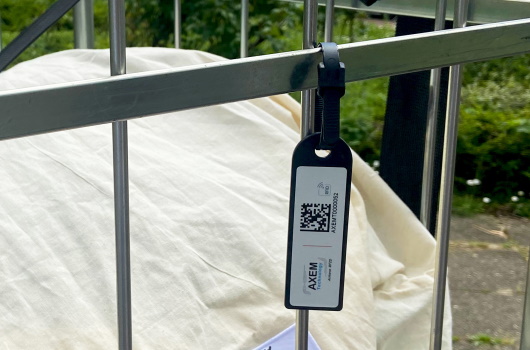
How to choose an RFID tag?
Like the RFID Reader , the tag is a fundamental element in an RFID solution. AXEM Technology offers a wide range of LF, HF and UHF tags to meet all your identification and traceability needs. They all have specific characteristics, because every project is unique, and the choice of tag will have a direct impact on process reliability. Here are the main criteria you need to take into account when choosing your RFID tag.
What are the environmental constraints?
In addition to knowing whether the products will be used indoors or outdoors, and therefore whether they will be exposed to the elements, industrial environments sometimes call for extreme conditions. For example, we offer very high-temperature tags for applications on metal or other materials. For the autoclave process, there are specific tags that resist pressure, chemicals, steam and very high temperatures.
Product lifetime
Let's take the example of pallets that need to be identified. If they are to be discarded after a single use, a glued-on RFID tag will suffice, but if they are to be reused, a hardened tag will be needed, as pallets are abused and often stored outdoors; the tag must therefore be very resistant. For metal objects, such as drums or pipes, there are also magnetic tags and flexible collars, which can be repositioned.
Type of product
First of all, what is the material of the product you want to identify?
The material of the product will determine the shape, flexibility and material of the tag.
Metal objects require extra attention, as metal interferes with the passage of waves: special metal tags are therefore required, with a layer of insulating material. For clothing, for example, we offer textile tags that can be sewn on and withstand the stresses of washing.
Are there any size constraints?
You'll find a wide range of small tags, available with various types of fasteners and packaging, for example for tracking small tools. Some are also resistant to high temperatures.
What is its form?
The shape of the product partly determines the shape of the tag. For example, we offer RFID tags for pipes, flexible tags for curved objects, and so on.
What will be the reading distance
The desired reading distance determines the choice of frequency: Low Frequency (LF), High Frequency (HF) or Ultra High Frequency (UHF). For a short reading distance (a few cm), you can choose between LF, HF or UHF. For medium distances (up to 50 cm), you can opt for HF or UHF. great distance(up to 10m), UHF is the obvious choice.
Once the frequency has been determined, it's important to know that the greater the reading distance required, the larger the antenna contained in the tag, and that the power of the Reader RFID will have an impact on the reading distance. If the aim is to identify all the products in a warehouse during an inventory, the reading distance needs to be high. But if products on a production line need to be precisely identified one by one, tags and a short-range Reader are more suitable.
It's also worth noting that the presence of water considerably reduces the passage of waves: the reading distance will therefore be very short in contact with water.
Choosing the fastening method
This will depend on the type of product, its lifespan and the environment. There are RFID collars with secure fastening, stick-on labels, tags that are molded into the product, etc.
How large should the tag memory be?
Once again, it all depends on the RFID application. Sometimes, you only need to identify a product by its unique number, which will be recognized by the database. But sometimes, the chip's memory needs to be larger, and include other information. This is necessary for isolated areas, for example, as operators who don't have access to a database can consult and update all the key information on the tag.
We design, manufacture and distribute a wide range of high-performance models. But choosing a tag isn't easy, so don't hesitate to contact us to guide you towards the RFID tag best suited to your application.
Subscribe to our newsletter
Receive our news directly in your mailbox!
" * " indicates required fields
